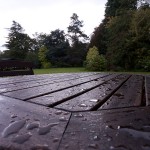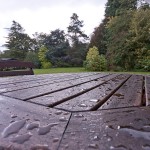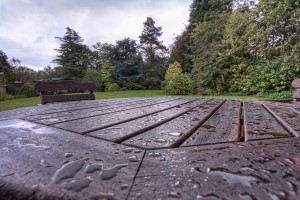In my last post I showed some of the interesting effects that can be made with HDR. I tried to make it clear that the technique can also be used to create enhanced but realistic photos. As I explained, HDR is used to add additional light information to the photo which allows these extreme effects to be created. To demonstrate a more realistic processing I’m going to use the same starting image as last time:
As can be seen in the original image the sky is overexposed while the shadows are very dark. While this can be edited in any decent photo software, the result will look similar to the right image. This edited image shows far more detail in the shadows and some more in the sky. This edit was only made possible due to the camera saving into a RAW format.
The final edit shows the same level of improvement over the original photo (in terms of detail) as the dramatic edits of the last post. The same type of processing is applied but less strongly allowing the photo to retain a more natural feel.






